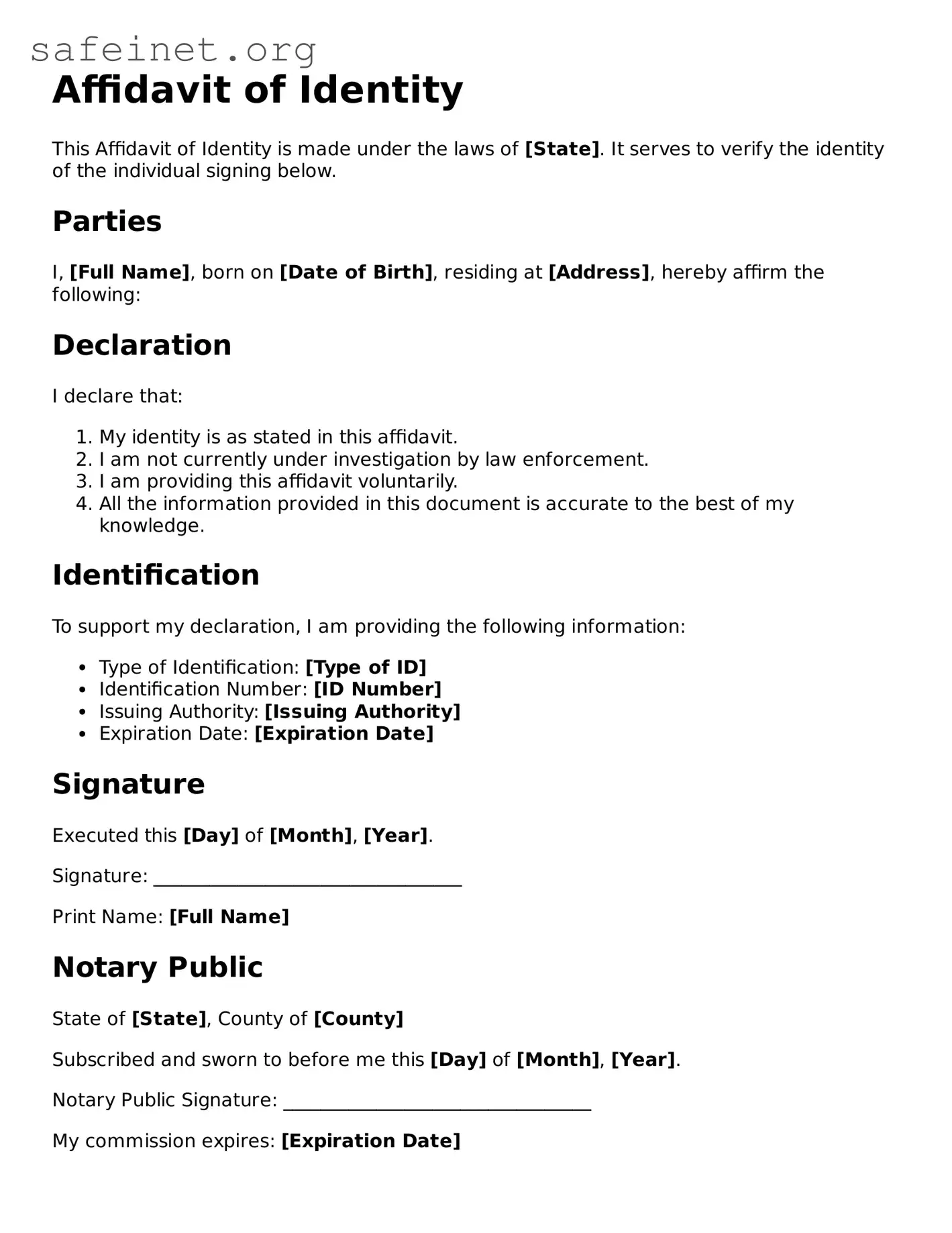Affidavit of Identity
This Affidavit of Identity is made under the laws of [State]. It serves to verify the identity of the individual signing below.
Parties
I, [Full Name], born on [Date of Birth], residing at [Address], hereby affirm the following:
Declaration
I declare that:
- My identity is as stated in this affidavit.
- I am not currently under investigation by law enforcement.
- I am providing this affidavit voluntarily.
- All the information provided in this document is accurate to the best of my knowledge.
Identification
To support my declaration, I am providing the following information:
- Type of Identification: [Type of ID]
- Identification Number: [ID Number]
- Issuing Authority: [Issuing Authority]
- Expiration Date: [Expiration Date]
Signature
Executed this [Day] of [Month], [Year].
Signature: _________________________________
Print Name: [Full Name]
Notary Public
State of [State], County of [County]
Subscribed and sworn to before me this [Day] of [Month], [Year].
Notary Public Signature: _________________________________
My commission expires: [Expiration Date]
